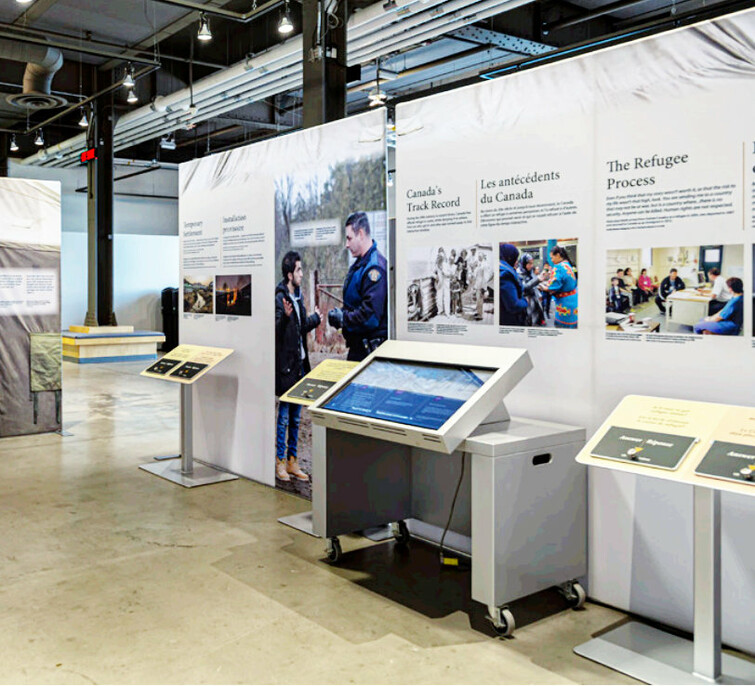Refugee Canada Tent Exhibit at The King's University

February 12 – March 22
Atrium, The King's University
The Refuge Canada Tent Exhibit will be hosted at The King's University's campus during February and March. Access to this exhibit is free.
The Refuge Canada Tent Exhibit follows the history of Canada’s response to refugees and displaced peoples worldwide, focusing specifically on major conflicts in the 20 and 21 centuries. In addition to telling stories of displaced people groups, the exhibit analyses Canada’s response to these major humanitarian needs.
The Micah Centre would be happy to work with you to reserve group tours of this exhibit. Contact Jonathan Nicolai-deKoning, Micah Centre Program Director for more information.
What is this exhibition?
Refuge Canada Tent is a small, bilingual exhibit created by the Canadian Museum of Immigration at Pier 21 to travel to libraries and community centres across Canada. The exhibit was designed to resemble a tent and is the same size as a typical shelter used in refugee camps today.
Refuge Canada Tent introduces people to Canada’s place in the global refugee crises. It does this in two ways: First, by helping people understand the experience of refugees and the challenges they face. Second, by investigating Canada’s historical track-record of responding to refugees, which is more mixed than people may realize.
This exhibit was adapted from the larger exhibition, Refuge Canada, which is currently travelling to museums across Canada. You can find information on the Canadian Museum of Immigration at Pier 21’s website about their travelling exhibitions program.
Why is it important?
The refugee experience is important to explore as a part of Canada’s immigration history, and to show that Canada has had a mixed record in welcoming refugees. Refuge Canada Tent looks at injustices and challenges as well as the stories of success and contributions made by people who came to Canada as refugees.
Where did the information in the exhibit come from?
The Museum research team did a series of in-depth, scholarly research reports on the history of refugees and presented them to the curatorial team. The curatorial team used the reports to choose how the information would be presented in the exhibit.
Is it family friendly?
The exhibit was created for a general audience, and does contain sensitive content in stories or images that may evoke emotions. It will also prompt questions and lead to important discussions and education. Information is presented in an interactive way that will engage young people, however this kind of emotional experience might not be for everyone, so the decision to bring children through the exhibit is up to the individual parents or guardians who know their children best.